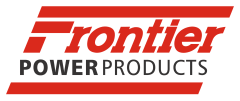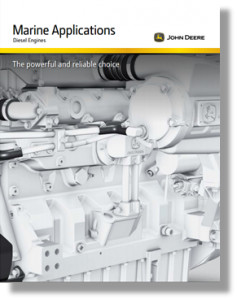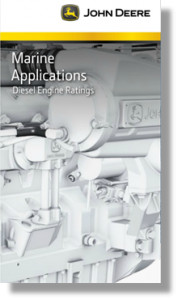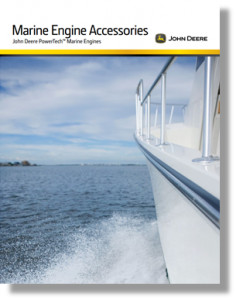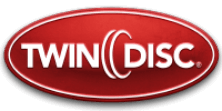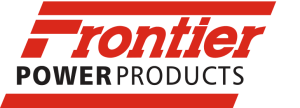With our roots on the west coast of Canada, we have lots of experience when it comes to marine engines.
What is Unique about Marine Engines?
Marine engines usually use “raw” (sea, lake or river) water as the heat sink for the engine’s cooling system. As well, raw water may be used to cool turbocharged combustion air. To transfer jacket water heat, engine coolant may be circulated through a heat exchanger located in the vessel or through tubes or channels located outside the hull. In both cases, the heat is transferred through a heat exchange mechanism to the raw water via a closed circuit that enables heat transfer to the raw water. Charge air cooling can be performed either by circulating raw water through a corrosion resistant charge-air-cooler or through a separate, closed, heat exchanger system. Conventional liquid to air radiators are not commonly used in marine applications unless the engines are deck mounted or have large volumes of fresh air available.
Depending on the service, marine engines may require classification approval. There are several classification societies including Lloyds Registry, DNV GL, ABS and others (see Classification Societies under Things to Consider below).
The duty cycle of the engine is an important determining factor in sizing the engine’s power output. A single engine model may have several power ratings available, dependent upon the intended usage. For satisfactory engine life, the power rating must match the actual duty cycle.
We sell a range of marine propulsion engines that can be used in vessels engaged in heavy duty, commercial or pleasure craft applications.
 Checklist of Things to Consider
Checklist of Things to Consider
Each of the topics listed below requires planning. The information offered here is by no means comprehensive. In all cases you should get expert advice to ensure that all of the vessel’s main and subsystems are properly designed for the vessel. Power Requirements: Get the correct rating for the vessel’s usage.Engine manufacturers rate their engines based upon the duty cycle of the engine. For example, an ocean going towing vessel would use a “continuous” “A” or “M1” rating. This allows unlimited hours at full power with a 10 percent overload available. Ratings go up from there. Limitations on hours and engine rpm are imposed on all ratings but the continuous rating. As there is normally an endless supply of relatively cool water available, marine engine ratings are often higher than the ratings for industrial engines of the same model. Raw water may be used to cool the combustion air. This allows more oxygen to be packed into the cylinder and, therefore, more fuel can be injected, still producing clean combustion. There are other limiting, mechanical factors to power output. Misapplying an engine by exceeding the power limitations will lead to shortened life. Durability depends on many factors but overloading an engine is a certain means of shortening its life. Physical Factors: Will it fit and if it does can you get at everything?Whether you require an engine for a new vessel or you need a repower engine, the physical dimensions and service locations are an important concern. Some of the things to consider, include:
Is the engine serviceable?
If you are intending to re-use an existing marine transmission:
Installation angularity is a consideration as is weight and weight distribution. Cooling and Ventilation: The engine has heat to reject and requires fresh air for combustion and heat radiation.The cooling system type needs to be determined. Shell and tube or plate type heat exchangers can be mounted inside the vessel and raw water can be pumped through the coolers to provide jacket water and charge-air cooling. These can be serviced inside the hull and are protected from damage by contact with objects outside the vessel. As well they may be more effective when the vessel is stationary or moving slowly. External coolers such as keel, grid or channel coolers are frequently preferred on commercial vessels. The engine’s coolant circulating pump will normally circulate the fresh water and no raw water pump is required. In any case, the heat rejection from the engine, the ambient water temperature, the flow rates and the efficiency of the cooler will be factors in determining a satisfactory heat exchanger solution. Ventilation is required in the engine or machinery areas to allow the engine to access an adequate supply of combustion air. This air flow must not be overheated in the engine room or the engine’s power output could be compromised. In addition to combustion air there is heat radiation from the engine and the exhaust system. Usually there are other sources of heat in an engine area and adequate ventilation must be provided so that the area remains sufficiently in the highest ambient conditions. Electrolysis & BondingIn sea water applications, sacrificial anodes (zincs) are used to protect metallic components. Items in the propulsion system are normally bonded and grounded to a sacrificial metal that will protect them from electrolysis. Exhaust SystemCommonly, we see two types of exhaust systems:wet or dry. As the name implies, in a wet system, raw water is mixed with the exhaust gases. This cools the exhaust gas stream and the exhaust gases and water are vented outside the vessel through a fitting above the waterline. There is a need to prevent water from entering the exhaust system from outside the vessel, as from a “following sea”. A riser at the end of the engine’s exhaust manifold, a flapper style check valve or other device is required to prevent water from getting into the engine via the exhaust system. In a dry exhaust system exhaust gases are carried out of the vessel, often through a vertical exhaust stack. This method eliminates the possibility of water entering the engine through the exhaust system, except from precipitation. As the exhaust gasses are not cooled by raw water, it is normal to blanket the exhaust system with heat resistant exhaust wrap to prevent unwanted heat transfer. To reduce rain water incursion, the exhaust piping outlet is usually made nearly horizontal. Torsional CompatibilityAn engine in a propulsion system is connected to the propeller via a marine transmission and propeller shaft in a conventional “shaft and rudder” propulsion system. There are other systems in common use such as azimuthing drives, controllable pitch propellers, electric drives and so on. Regardless of the system used, a theoretical torsional evaluation should be done. Classification societies require a torsional vibration analysis (TVA). To mitigate the transmission of potentially harmful energy, various coupling materials can be used between the engine and the marine transmission. This protects the engine’s crankshaft and reduces noise and can reduce component wear. Vibration IsolationMany vessels owners seek to reduce noise and vibration throughout their vessels. The use of marine style isolators between the engine/transmission and the stringers can reduce noise and vibration. To be effective, the mounting system must suit the application. Vendors of isolation systems have computer programs to assist in the selection process. Ancillary LoadsMany vessels have other systems that may be run from the main engine. These could include bilge or fire pumps, hydraulic pumps for winches or deck machinery and auxiliary charging systems. Most engines will permit some additional loading from the front of the crankshaft. Some working vessels require a clutched or live front power-take-off that provides significant power for towing winches or seine drums etc. Engine manufacturers publish power (torque) limits for front drives. As well, they may offer gear driven hydraulic pump or air compressor mounts. Marine transmissions also often offer live or clutched power-take-off drives. Again, the power limitations are published by the manufacturer. Classification Societies
ConclusionMarine propulsion engines are the core of inter-related subsystems. First off, the engine has to be properly sized for the intended service. Then each subsystem requires attention to ensure that it is fully compatible with the engine. Paying attention to all of the aspects of the installation will result in a reliable propulsion system. |
Available Marine Propulsion Engines
Here is information on the marine propulsion engines that we sell.
Have a look around and then give us a call and let us help you find what you need.

John Deere marine engines provide a variety of propulsion or auxiliary engines to 750 hp. Based on their rugged and fuel efficient industrial diesels, John Deere engines provide heavy-duty features such as wet cylinder liners to ensure a long and reliable service life.
John Deere Marine Diesel Propulsion Engines 60 to 559 kW (80 to 750 hp)
John Deere Marine Generator Drive Engines 40 to 416 KW (54 to 558 hp)
John Deere Marine Auxiliary Engines 129 to 448 kW (173 to 600 hp)
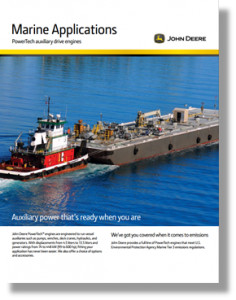
![]()
Mitsubishi Heavy Duty Marine Propulsion Engines are designed for marine applications. Unique engine design features include individual heads, inspection ports, and heavier blocks. Mitsubishi has also been able to meet current engine emission regulations while still offering a proven mechanical governor control system.
Mitsubishi Marine Diesel Propulsion Engines 320 to 1250 kW (429 to 1676 hp)
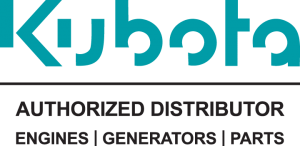
We sell a limited range of custom, marinized Kubota diesel engines. We also offer packaged marine generator sets, hydraulic power units, and customized marine auxiliaries.
Kubota Marine Diesel Engines, Generator Sets, and Custom Auxiliaries (25 to 67 hp)
Marine Transmissions
We offer ZF and Twin Disc marine transmissions for vessel propulsion systems.
